Class library manager composer installs and configures laravel
When doing projects using the laravel framework, sometimes my mind goes blank and I don’t know how to start, or I encounter many small problems when installing laravel and I don’t know how to solve them. Below I have compiled the notes during the installation process. Hope this can provide support for developers who encounter problems.
1. Download and installation of composer
composerDownload
English website: https://getcomposer.org/
Chinese image: http://www.phpcomposer.com/
1. Tutorial on installing composer under windows:
Chinese image
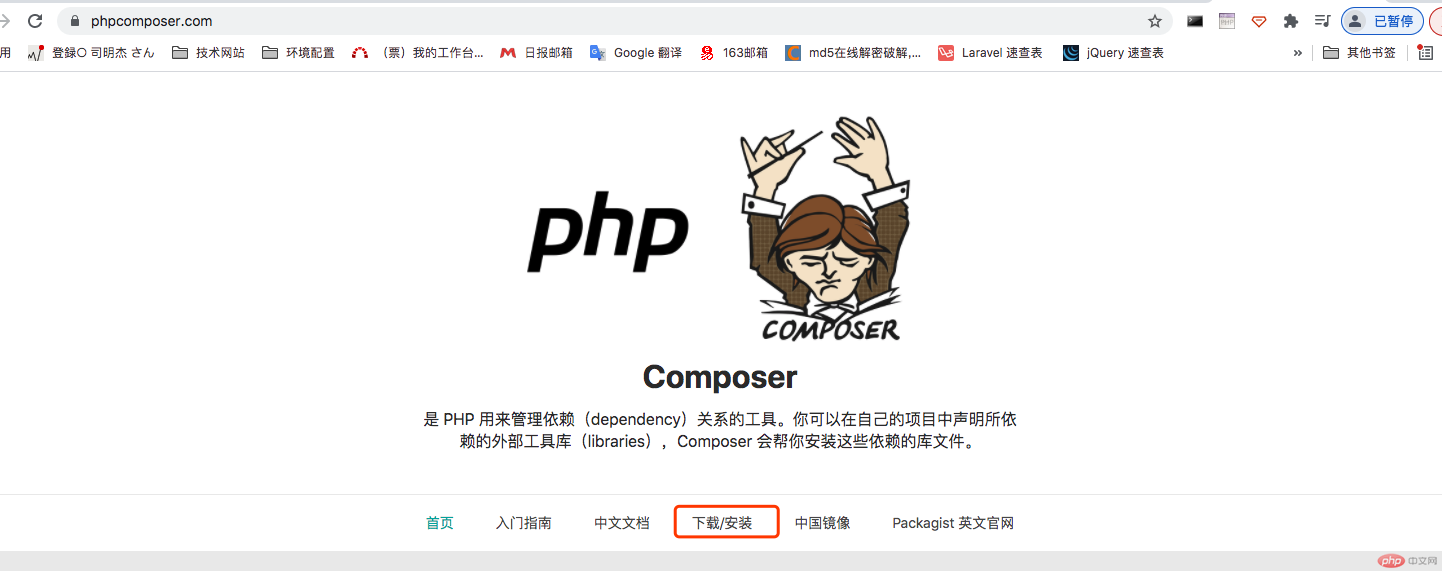


No need to modify this configuration

You need to pay attention here before installing this composer A PHP environment is required
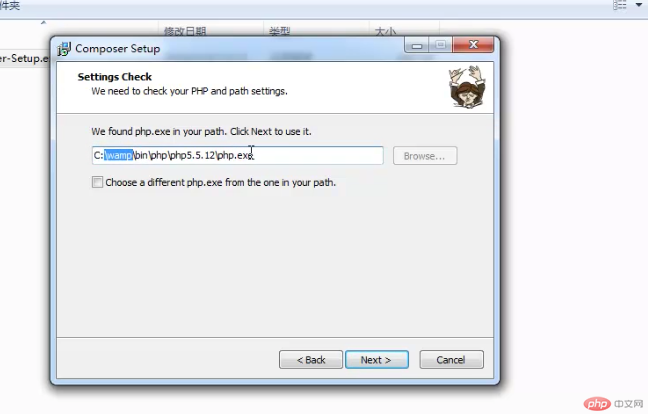
#The above step can be directly installed. After completion, use the composer -v of the cmd command to detect it.
2. Tutorial on installing composer under mac system:
Download Composer directly in command line mode under mac
Use curl command to download:
curl -sS https://getcomposer.org/installer | php
Or if curl is not installed, you can also use the php command to download:
php -r "readfile('https://getcomposer.org/installer');" | php
Manually download Composer
Address: https://getcomposer.org/composer.phar
After you download composer.phar, you can place it in the directory, but every time you create a new directory, you must make a copy to the new directory, which is more troublesome. So the best way is to put it in usr/local/bin and make it a global command.
sudo mv composer.phar /usr/local/bin/composer
This way you can use the composer command directly in the terminal
2. Laravel installation
composer installs Laravel
1. Download and install directly (need to bypass the wall)
Create a Laravel project named laravel
composer create-project laravel/laravel --prefer-dist
Create a Laravel project named blog
composer create-project laravel/laravel blog -prefer-dist
2. Use the composer image to install (do not circumvent the wall)
Use the Composer image to install the latest version of Laravel
There are two ways to enable the mirror service:
System global configuration: add the configuration information to composer's global configuration file config.json,
Individual project configuration: add the configuration information to a certain In the composer.json file of each project
Example 1: Modify the global configuration file of composer (recommended method)
Open the command line window (windows users) or console (Linux. Mac users) And execute the following command:
composer config -g repo.packagist composer https://packagist.phpcomposer. com
After the execution of the above command is completed, you can execute the following command again without going over the wall.
Create a Laravel project named laravel
composer create-project laravel/laravel --prefer-dist
Create a Laravel project named blog
composer create-project laravel/laravel blog -prefer-dist
Example 2: Modify the composer.json configuration file of the current project:
Open the command line window (windows users) or console (Linux, Mac users ), enter the root directory of your project (that is, all directories of the composer.json file), and execute the following command:
composer config repo.packagist composer nttps://packagist. phpcoeposer. com
Step 1: Because it is executed under the current project, create a project file first Folder test
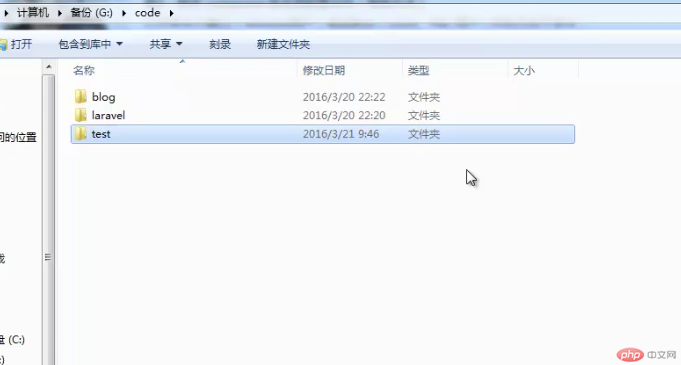
The second step is to modify the composer file of the current project, so there must be a composer.json file first, so manually simulate a text file without any settings. , just name it composer.json.
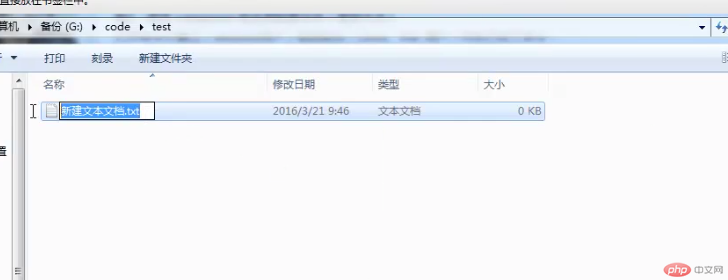
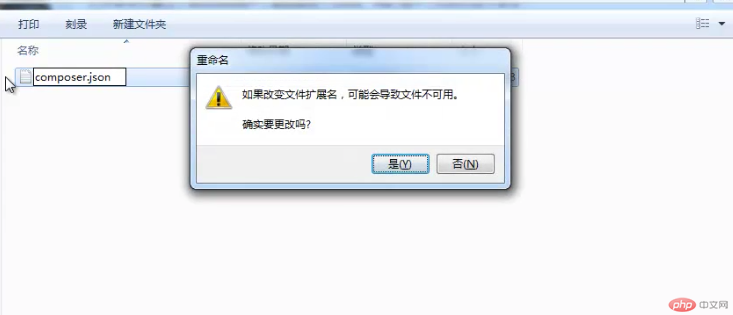 As prompted above, click "Yes"
As prompted above, click "Yes"
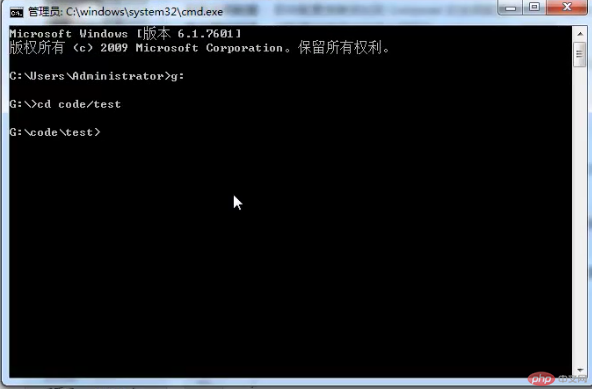
Then execute the following command:
composer config repo.packagist composer nttps://packagist. phpcoeposer. com
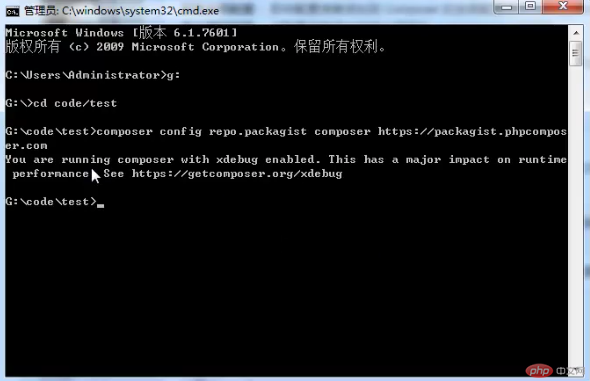
Take a look at the composer.json file. This is a file with some extra content.
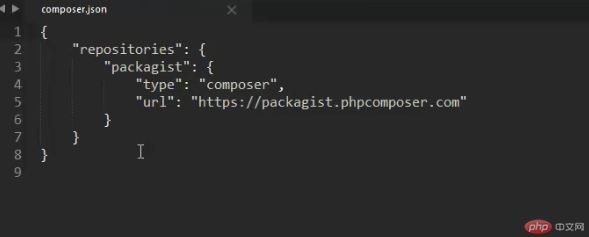
Then you can use the following command without going over the wall. .
Create a Laravel project named laravel
composer create-project laravel/laravel --prefer-dist
Create a Laravel project named blog
composer create-project laravel/laravel blog -prefer-dist
The above command will be in the composer.json file in the current project The configuration information of the mirror is automatically added at the end (you can also add it manually): The content in the
composer.json file (as shown in the screenshot above) means that the installation of laravel is specified as the Chinese website URL.
The above steps have been installed successfully by me. Just follow the steps above to install them step by step. If you don’t understand anything, please leave a message. Thank you for your support. Hope this helps everyone.
The above is the detailed content of Class library manager composer installs and configures laravel. For more information, please follow other related articles on the PHP Chinese website!

Hot AI Tools

Undresser.AI Undress
AI-powered app for creating realistic nude photos

AI Clothes Remover
Online AI tool for removing clothes from photos.

Undress AI Tool
Undress images for free

Clothoff.io
AI clothes remover

Video Face Swap
Swap faces in any video effortlessly with our completely free AI face swap tool!

Hot Article

Hot Tools

Notepad++7.3.1
Easy-to-use and free code editor

SublimeText3 Chinese version
Chinese version, very easy to use

Zend Studio 13.0.1
Powerful PHP integrated development environment

Dreamweaver CS6
Visual web development tools

SublimeText3 Mac version
God-level code editing software (SublimeText3)

Hot Topics
 Laravel Introduction Example
Apr 18, 2025 pm 12:45 PM
Laravel Introduction Example
Apr 18, 2025 pm 12:45 PM
Laravel is a PHP framework for easy building of web applications. It provides a range of powerful features including: Installation: Install the Laravel CLI globally with Composer and create applications in the project directory. Routing: Define the relationship between the URL and the handler in routes/web.php. View: Create a view in resources/views to render the application's interface. Database Integration: Provides out-of-the-box integration with databases such as MySQL and uses migration to create and modify tables. Model and Controller: The model represents the database entity and the controller processes HTTP requests.
 Use Composer to solve the dilemma of recommendation systems: andres-montanez/recommendations-bundle
Apr 18, 2025 am 11:48 AM
Use Composer to solve the dilemma of recommendation systems: andres-montanez/recommendations-bundle
Apr 18, 2025 am 11:48 AM
When developing an e-commerce website, I encountered a difficult problem: how to provide users with personalized product recommendations. Initially, I tried some simple recommendation algorithms, but the results were not ideal, and user satisfaction was also affected. In order to improve the accuracy and efficiency of the recommendation system, I decided to adopt a more professional solution. Finally, I installed andres-montanez/recommendations-bundle through Composer, which not only solved my problem, but also greatly improved the performance of the recommendation system. You can learn composer through the following address:
 Solve caching issues in Craft CMS: Using wiejeben/craft-laravel-mix plug-in
Apr 18, 2025 am 09:24 AM
Solve caching issues in Craft CMS: Using wiejeben/craft-laravel-mix plug-in
Apr 18, 2025 am 09:24 AM
When developing websites using CraftCMS, you often encounter resource file caching problems, especially when you frequently update CSS and JavaScript files, old versions of files may still be cached by the browser, causing users to not see the latest changes in time. This problem not only affects the user experience, but also increases the difficulty of development and debugging. Recently, I encountered similar troubles in my project, and after some exploration, I found the plugin wiejeben/craft-laravel-mix, which perfectly solved my caching problem.
 How to simplify email marketing with Composer: DUWA.io's application practices
Apr 18, 2025 am 11:27 AM
How to simplify email marketing with Composer: DUWA.io's application practices
Apr 18, 2025 am 11:27 AM
I'm having a tricky problem when doing a mail marketing campaign: how to efficiently create and send mail in HTML format. The traditional approach is to write code manually and send emails using an SMTP server, but this is not only time consuming, but also error-prone. After trying multiple solutions, I discovered DUWA.io, a simple and easy-to-use RESTAPI that helps me create and send HTML mail quickly. To further simplify the development process, I decided to use Composer to install and manage DUWA.io's PHP library - captaindoe/duwa.
 Laravel framework installation method
Apr 18, 2025 pm 12:54 PM
Laravel framework installation method
Apr 18, 2025 pm 12:54 PM
Article summary: This article provides detailed step-by-step instructions to guide readers on how to easily install the Laravel framework. Laravel is a powerful PHP framework that speeds up the development process of web applications. This tutorial covers the installation process from system requirements to configuring databases and setting up routing. By following these steps, readers can quickly and efficiently lay a solid foundation for their Laravel project.
 Using Dicr/Yii2-Google to integrate Google API in YII2
Apr 18, 2025 am 11:54 AM
Using Dicr/Yii2-Google to integrate Google API in YII2
Apr 18, 2025 am 11:54 AM
VprocesserazrabotkiveB-enclosed, Мнепришлостольностьсясзадачейтерациигооглапидляпапакробоглесхетсigootrive. LEAVALLYSUMBALLANCEFRIABLANCEFAUMDOPTOMATIFICATION, ČtookazaLovnetakProsto, Kakaožidal.Posenesko
 How to view the version number of laravel? How to view the version number of laravel
Apr 18, 2025 pm 01:00 PM
How to view the version number of laravel? How to view the version number of laravel
Apr 18, 2025 pm 01:00 PM
The Laravel framework has built-in methods to easily view its version number to meet the different needs of developers. This article will explore these methods, including using the Composer command line tool, accessing .env files, or obtaining version information through PHP code. These methods are essential for maintaining and managing versioning of Laravel applications.
 How to use Composer to improve the security of Laravel applications: Applications of wiebenieuwenhuis/laravel-2fa library
Apr 18, 2025 am 11:36 AM
How to use Composer to improve the security of Laravel applications: Applications of wiebenieuwenhuis/laravel-2fa library
Apr 18, 2025 am 11:36 AM
When developing a Laravel application, I encountered a common but difficult problem: how to improve the security of user accounts. With the increasing complexity of cyber attacks, a single password protection is no longer enough to ensure the security of users' data. I tried several methods, but the results were not satisfactory. Finally, I installed the wiebenieuwenhuis/laravel-2fa library through Composer and successfully added two-factor authentication (2FA) to my application, greatly improving security.






